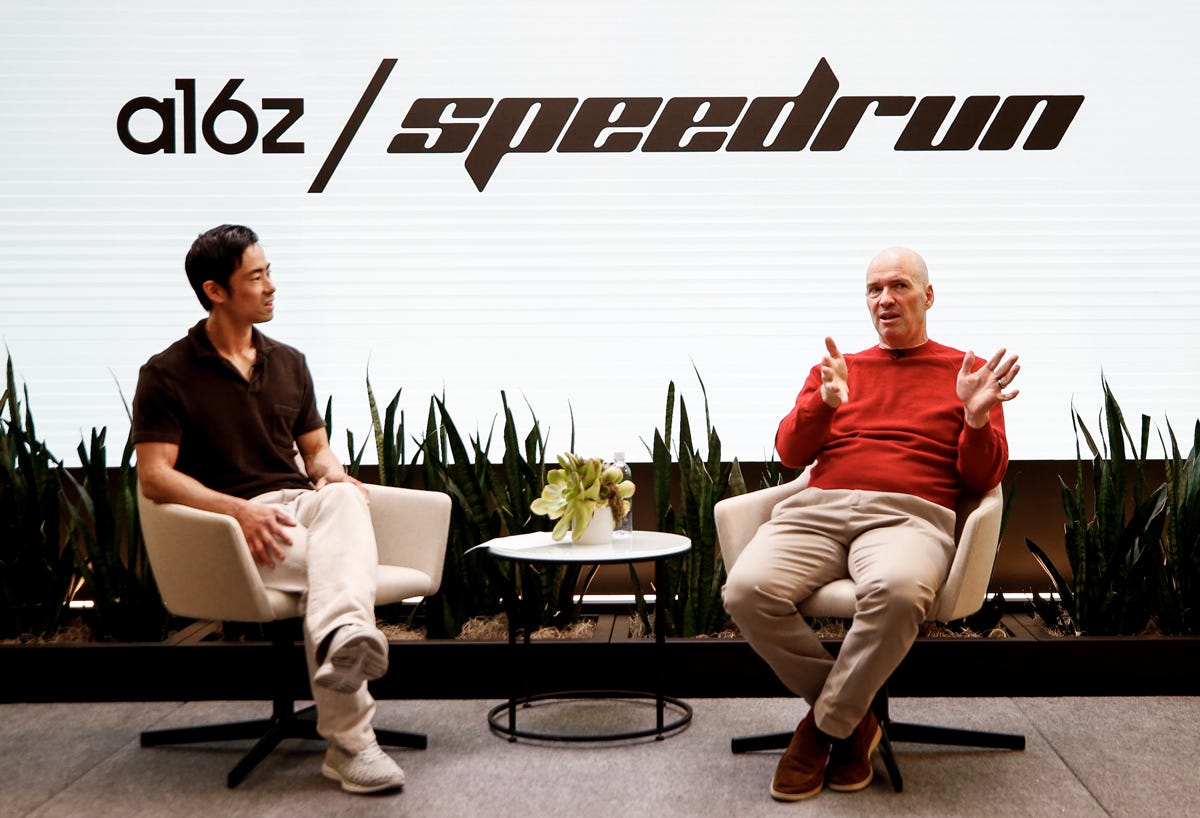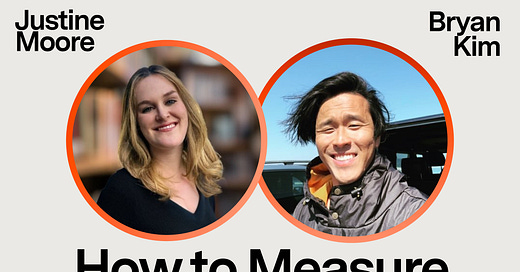How to Measure Product-Market Fit
Plus, Ben Horowitz on the biggest risks founders encounter when hiring their first engineers
LAST CHANCE: a16z speedrun demo day is our exclusive event where speedrun founders pitch live on stage. This year’s demo day is coming to SF on March 18th.
Are you an investor interested in attending? It’s your last chance to apply for a spot. Seats are extremely limited to select investors and invitations are non-transferable.

In a 2007 blog post, a16z co-founder Marc Andreessen defined product-market fit as “being in a good market with a product that can satisfy that market.”
PMF—more than any other factor—determines whether a startup succeeds or fails. It’s so important, Andreessen wrote, that founders should “do whatever is required” to find it.
As he put it: The only thing that matters is getting to product/market fit.1
Now, 18 years later, the importance of product-market fit has become widely understood within the startup world. But actually achieving PMF remains a challenge for anyone running a startup—one each founding team must solve their own way.
Last week, a16z partners Bryan “BK” Kim and Justine Moore did a closed-door Q&A session with dozens of speedrun founders about the art and science of getting to PMF when building consumer apps and products. In particular, they explain why the way investors and founders measure PMF has changed in recent years.
We took notes and are sharing a few of their insights below:
On Finding Metrics That Can’t Be “Gamed”
How do investors measure product-market fit? How do you know when a startup has really found it?
This has always been a challenge, Bryan Kim told an audience of speedrun founders, because for any metric you pick, founders will find a way to “game” the results. For a long time, Kim believed the best way to measure PMF is through retention.
“But what I’ve learned is that companies have figured out how to game retention too,” he said. For example, contact book hacking. “So it's harder now to actually say if an app has PMF or not based on just simple retention numbers.”
All of this made PMF harder to track from an investor perspective. Justine Moore gave a specific example: “Sometimes we’ll encounter people who say they have 50% D30 retention,” she says, “and then you dig in, and actually it’s because they have a browser extension which users haven't deleted after 30 days.”
That said, there are still some telltale signs that a product has real PMF:
Monetization - “Monetization,” Moore says, “is sort of the ultimate product market fit: are people willing to pay, and then are they retaining on the subscriptions?”
Usage - “How many times a day are users going into the app?” Moore asks. “And how many actions are they taking? Are they posting versus viewing? Are they passively consuming or actively engaging? Are they inviting friends? Are they growing a network on the app?”
Consistency - For daily products, Kim says it’s more about how often your users show up: “If 60% or 70% of your users are showing up five or more days a week, that's really hard to game.”
And of course, traditional retention metrics like D30 can still be a solid sign of PMF if they’re “ridiculous,” Kim says. “Like D30 of 60%—that's iconic, legendary level.”
On Doing Due Diligence With Customers
Both Justine Moore and Bryan Kim agree that there are also solid qualitative ways to detect PMF.
Moore says that digging through comments and uploads on social media are a good way to get a sense of the real value proposition of a product. “We’re constantly scouring Twitter and Reddit and YouTube comments,” she says. “Are people talking about one feature that someone will use once before churning? Or are they saying, this product changed my life, or I use this every day?”
Going directly to customers to see what they think about an app or product is a critical part of due diligence, Kim says. “Some of you are building very unique and innovative things,” Kim told the audience of speedrun founders, “and we may not fully understand the product or what the need is.” So sometimes the best thing to do is simply ask customers whether they really need the product.2
Kim lists Raspberry AI3 as a company that scored particularly strongly on this test. When Kim showed a professional fashion designer he knew an early version of Raspberry’s product, she came back after testing it and said “I’d like to quit my job and join this company, because it is magical.”
Kim was willing to write this off as an outlier response, but says when he showed the product to other fashion designers, the response was always “this is amazing.”
Of course, calling up customers doesn’t always go this well. Moore recalls a time when an app had gone slightly viral and she decided to call up some customers. The first person she asked about the app said "Oh yeah, I downloaded it because they were giving out free pizza at the beach,” Moore said, “and of the five people I called, four were like that.”
The “AI Witchcraft Effect”
As consumer behavior evolves, so too must the tools for measuring product-market fit. And as Bryan Kim points out, the advent of a new wave of AI powered apps has made customers more willing to try out new products.
“Consumer willingness to go find things and pay for things has increased,” Kim says, “and I think in part that's because a bunch of the AI products that are coming out are basically witchcraft.” The idea that you can generate a song or even an entire world with a simple prompt is simply so magical that customers are once again opening up their app stores to explore.
This behavior is a big change from just a few years ago.
As recently as 2019, Moore says, customers were more hesitant to try things because “All of the ideas that made sense to do had already been done, so people were just pursuing increasingly niche things. Like people had done the used shoe marketplace and the dog walker marketplace, and so then the next idea was, like, new shoes for dog walkers. And that was, yeah, that was too niche. I think people were so sick of it. It felt like there was nothing really new and magical.”
The result: customer acquisition got harder. But now Moore says she’s starting to see a real renewal in consumer excitement. “People believe that there are cool tech products that can exist again,” she says. “And they’re willing to try them.”
It’s starting to feel like “consumer apps are back,” Moore says. Though if customers are casually trying out apps more easily, that means the standards for measuring PMF have to adapt. It’s not enough to show that users are piling onto an app in droves. More fundamental signals have to be there.
As Kim puts it: “I'm looking for products that matter to people's lives.”
Ben Horowitz on the Big Mistake Founders Make When Hiring Their First Engineers
Last week a16z cofounder Ben Horowitz stopped by for a session with speedrun founders. One founder asked him “what mistakes do you think founders often make when hiring their first engineers?”
Here’s how Ben responded:
When they're already rich, they ask for way more. Because if I have $10 million, $5 million means nothing to me. Only $100 million means something to me. So unless you can change somebody's wealth an order of magnitude, the money is not going to hold them.
So if you hire somebody who's already got $50 million, the amount of success you have to have to make that motherf—er happy is crazy. And when things go bad, they call in rich. They're like, sorry, I'm not coming to work today. I'm already rich. F— you. It’s too hard. And so you have to be very, very careful about that.
—Ben Horowitz, co-founder of a16z
💡 More Big Ideas
▶️ We just published an 18-minute cutdown of our talk with Zynga founder Mark Pincus: Why Most Startups Fail, Founder Control, and How to Win
🚀 Tech Week 2025 event submissions are OPEN! The deadline to submit events for New York Tech Week (June 2–8) is April 11th. Katia Ameri shares how to submit here.
🤖 Macy Mills tricked ChatGPT into a long debate with Sesame’s new voice AI, with hilarious results.
💼 There are currently over 400 open jobs listings across our portfolios. Join our talent network for more opportunities. If we see a fit for you, we'll intro you to relevant founders in the portfolio.
That’s it for this week. If you haven’t already subscribed, it’s time to lock in.
You are receiving this newsletter since you opted in earlier; if you would like to opt out of future newsletters, you can unsubscribe immediately.
This newsletter is provided for informational purposes only, and should not be relied upon as legal, business, investment, or tax advice. You should consult your own advisers as to those matters. This newsletter may link to other websites and certain information contained herein has been obtained from third-party sources. While taken from sources believed to be reliable, a16z has not independently verified such information and makes no representations about the enduring accuracy of the information or its appropriateness for a given situation.
References to any companies, securities, or digital assets are for illustrative purposes only and do not constitute an investment recommendation or offer to provide investment advisory services. Any references to companies are for illustrative purposes only; please see a16z.com/investments. Furthermore, this content is not directed at nor intended for use by any investors or prospective investors, and may not under any circumstances be relied upon when making a decision to invest in any fund managed by a16z. (An offering to invest in an a16z fund will be made only by the private placement memorandum, subscription agreement, and other relevant documentation of any such fund which should be read in their entirety.) Past performance is not indicative of future results.
Charts and graphs provided within are for informational purposes solely and should not be relied upon when making any investment decision. Content in this newsletter speaks only as of the date indicated. Any projections, estimates, forecasts, targets, prospects and/or opinions expressed in these materials are subject to change without notice and may differ or be contrary to opinions expressed by others. Please see a16z.com/disclosures for additional important details.
In the blog post where Andreessen first put forth this argument, he credits Benchmark Capital co-founder Andy Rachleff with this formula, calling it “Rachleff's Corollary of Startup Success.”
This approach is reminiscent of Sean Ellis’s famous “40% rule,” which says that if 40% of your customers say they’d be “very disappointed” to be unable to use the product again, that’s a strong signal you’ve found PMF.
Raspberry AI is an a16z portfolio company










Super cool!
Love it! Great piece